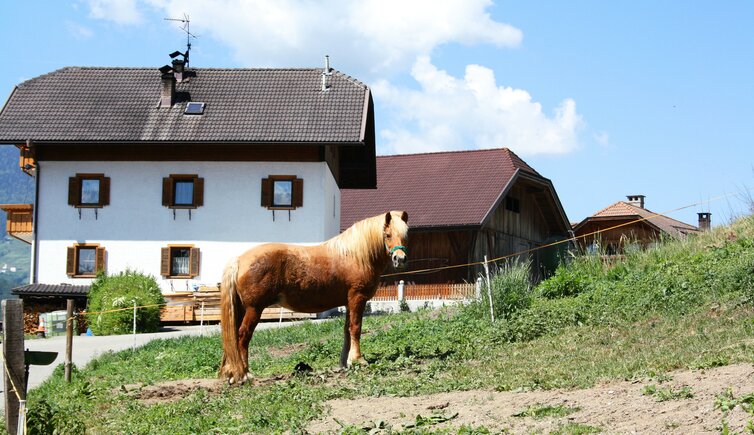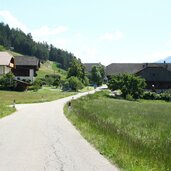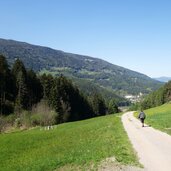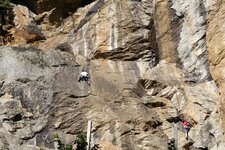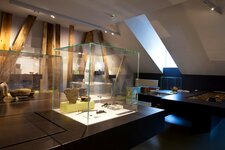The Belt Plate of Campolino, an important archaeological find from the Roman period, can be seen in the Mansio Sebatum Museum
Image gallery: Campolino
Due to the construction of the Riggertal loop and safety-related works, sections of the Val Pusteria Railway will be closed until January 2026. A rail replacement bus service will be in operation.
The three main… read more
Campolino (Lothen) is the name of one of the smallest districts of the market town of San Lorenzo. It seems like a hamlet in the middle of nowhere, and yet it is only a few kilometres from here to the lively centres of San Lorenzo and Brunico. It lies at the foot of the Val Pusteria low mountain range next to the equally small village of Fassine. From here, the farmer of the Stadelhof is said to have started to Kniepass in 1400 AD in order to build a church for St. Margaret.
The hill called Burgkofel near Campolino is an important archaeological site: During road construction works in 1940, numerous fibulae and a well-preserved bronze belt plate were found below it. In the centuries before Christ, belt plates were part of the costume, and this one shows two stags with ornamental antlers and decorated bodies. A consecration inscription in Rhaetian letters is engraved on the back. A few years earlier, 22 gold coins had already been found in San Lorenzo di Sebato, which went down in history as the Gold Coin Hoard of Sebatum.
In addition, herbal cosmetics courses are sometimes offered in Campolino by the Val Pusteria Adult Education Centre, and cheese, butter and yoghurt are produced. At the entrance to the village, the Mary Help of Christians Chapel catches the eye, where the May devotions are still held today. All around, hiking trails run below the Val Pusteria Sun Road, such as the Archaeological Panorama Trail, which belongs to the Mansio Sebatum Museum and tells of Roman times. On the hilltop of Campolino, there's one of South Tyrol's climbing gardens, with routes up to level 8a.
